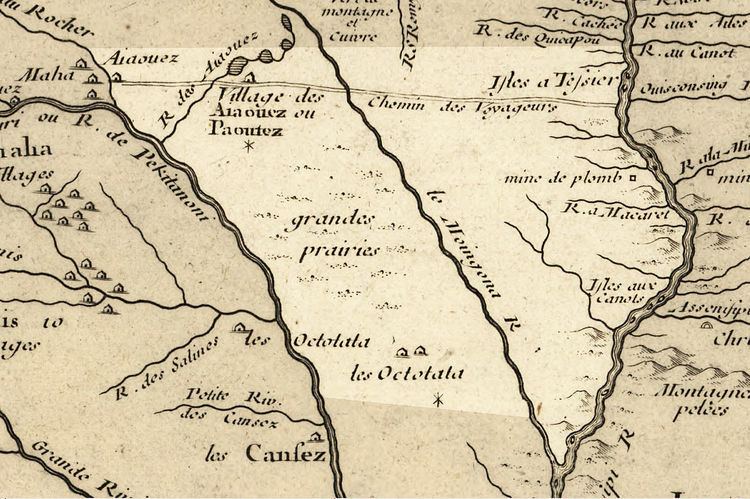 | ||
American Indians of Iowa include numerous Native American tribes which have lived in the state of Iowa historically and prehistorically:
Contents
Chiwere-Siouan speaking tribes
The Chiwere-speaking tribes are descended from the prehistoric Oneota culture. At the time of contact with European explorers, their range covered most of Iowa. The Ho-Chunk ranged primarily east of the Mississippi in southern Wisconsin, the Ioway/Baxoje ranged in northern Iowa, the Otoe in central and southern Iowa, and the Missouria in far southern Iowa.
Dakotan-Siouan speakers
The Dakota pushed southward into much of Iowa in the 18th and 19th century, and were commonly seen by settlers. In 1840, the translator Isaac Galland noted several Sioux groups in or near Iowa, including Wahpekute, North Sisseton, South Sisseton, East Wahpetonwan, West Wahpetonwan, Yankton, and Mdewakantonwan.
Dhegihan-Siouan speaking tribes
The following tribes arrived in the late prehistoric period:
The Dhegiha lived near the Missouri in the very Late Prehistoric and historic periods; they appear to have migrated to the region from the south or southeast, their origin location is debated.
Other Siouan-language-speaking tribes
The following tribes are of the late prehistoric period:
These may be descendants of Late Prehistoric Mill Creek cultures whose range extended into northwest Iowa.
Caddoan-speaking tribes
These may be descendants of Late Prehistoric Central Plains Tradition cultures that lived in southwest Iowa, especially around the Glenwood area. The Pawnee (Panis) are shown in southwest Iowa in a 1798 map, although they ranged primarily to the west.
Algonquian speakers
Tribes from the early historical period:
The encroachment of Europeans and long-term conflict among Algonquian and Iroquian tribes in the east pushed many eastern tribes into the Midwest. The Meskwaki have maintained a presence in Iowa, even after official removal in 1846, ultimately establishing a recognized Settlement.
Iroquoian speakers
The Wyandot (Huron) were Iroquoian speakers from the early historical period. Again, the encroachment of Europeans and long-term conflict between Algonquian and Iroquian tribes in the east pushed these tribes into the Midwest.
Moved into Iowa
These tribes moved to Iowa during the historic period:
Forced relocation of tribes in the 19th century led to eastern tribes living in and near Iowa. Potawatomi Chief Sauganash founded the village that eventually grew into Council Bluffs.
